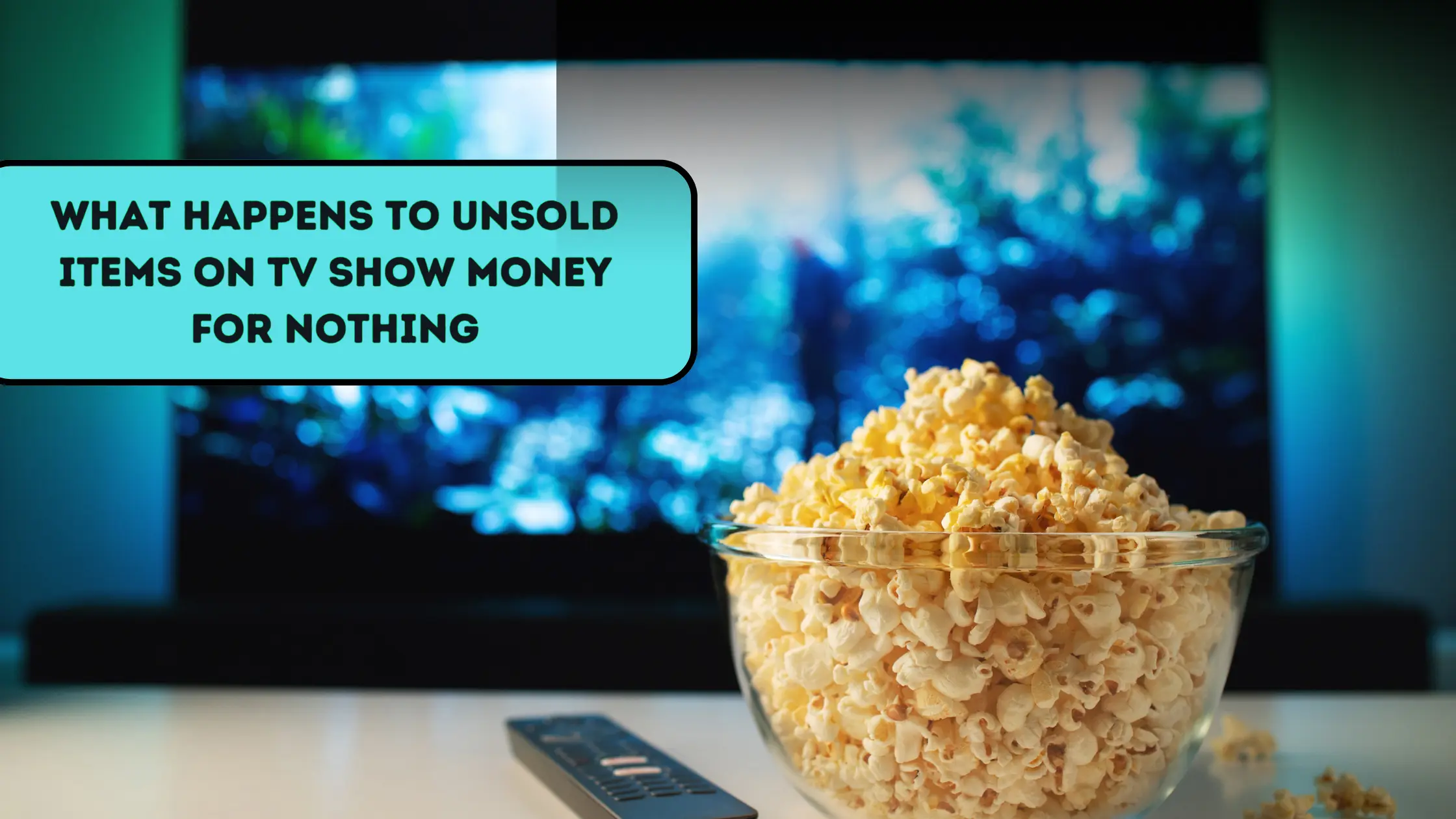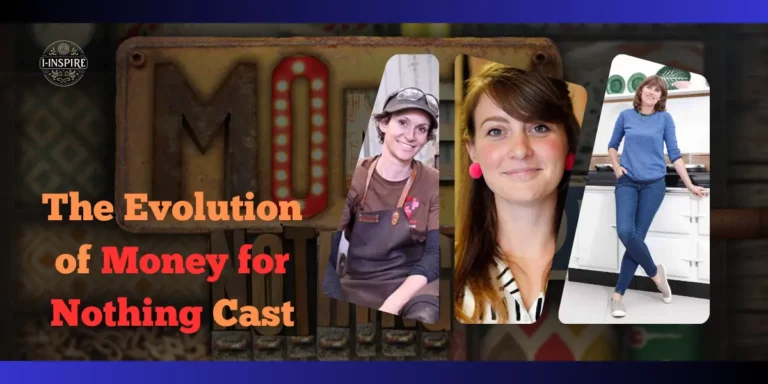What Happens To Unsold Items On TV Show Money For Nothing
Money For Nothing is a beloved British TV show that has captivated audiences since its debut on September 7, 2015. Airing on BBC One, the show follows a simple yet innovative concept: rescuing items from council refuse sites, upcycling them with the help of skilled designers, and selling them for a profit that is returned to the original owners. Hosted by a rotating cast including Sarah Moore, Jacqui Joseph, and JJ Chalmers, the show has become a staple of daytime television, promoting sustainability and creativity in equal measure.
But what happens when these transformed items don’t sell? This question has intrigued many viewers, and today we’ll delve into the fate of these unsold treasures.
What Happens To Unsold Items On TV Show Money For Nothing
The Process of Upcycling on Money For Nothing
Selection of Items
The journey of each item on Money For Nothing begins at the dump. The presenters, equipped with a keen eye for potential, sift through heaps of discarded goods to find items worth saving. The criteria for selection often include:
- Condition: Items that are structurally sound but cosmetically flawed.
- Potential for Transformation: Pieces that can be creatively repurposed or upcycled.
- Market Appeal: Items that have a potential buyer audience once transformed.
For instance, in one episode, Sarah Moore rescued a vintage desk that had seen better days but had good bones for a makeover.
Transformation
Once selected, the items are handed over to a team of talented designers and craftsmen. Regular contributors include Norman Wilkinson, Rupert Blanchard, and Forge Creative. The transformation process involves:
- Design Conceptualization: Designers envision a new life for the item.
- Craftsmanship: Skilled artisans work on the item, employing techniques like carpentry, metalwork, and upholstery.
- Final Touches: The finishing touches, such as painting or varnishing, enhance the item’s appeal.
For example, audio engineer Mark Phillips once turned a kitchen cabinet into a Bluetooth speaker, showcasing the innovative approaches taken by the show’s craftspeople.
Selling the Upcycled Items
The transformed items are then put up for sale. The show utilizes various platforms to reach potential buyers:
- Online Stores: Websites like Smithers of Stamford list the items for sale.
- Physical Shops: Some items are displayed in local boutiques or craft shops.
- Pricing Strategies: Prices are set based on the cost of materials, labor, and the perceived value of the finished product.
Outcomes for Unsold Items
Despite the creative transformations, not all items find buyers immediately. The show employs several strategies to ensure these items eventually sell:
Continued Efforts to Sell
- Price Reductions: Items may be discounted over time to attract buyers. For instance, a Guatemalan retro chair that didn’t sell was later offered at a 50% discount on the Smithers of Stamford website.
- Extended Listings: Unsold items remain listed on multiple platforms for an extended period. Some items have been known to stay listed for months or even years.
Storage Solutions
Until sold, unsold items need to be stored safely:
- Temporary Storage: Items are often kept in warehouses or showrooms.
- Long-term Storage: For items that take longer to sell, long-term storage solutions are considered, which can impact the overall profitability of the upcycling process.
Alternative Uses
When items remain unsold for too long, alternative uses are explored:
- Donations: Items may be donated to charities or community projects, aligning with the show’s sustainability and community engagement ethos.
- Repurposing: Some items are repurposed for future episodes or other projects, giving them a second chance at transformation and sale.
Challenges and Criticisms
The show faces several challenges when it comes to unsold items:
Financial Viability
- Cost vs. Selling Price: Upcycling costs sometimes exceed the selling price, leading to financial losses. For example, one episode featured a sofa that cost £1,000 to reupholster, raising questions about the economic sense of such transformations.
- Unsold Items: Instances where items fail to sell can impact the show’s profitability and the amount returned to the original owners.
Public Perception
Viewer opinions on the transformations vary:
- Aesthetic Criticisms: Some viewers feel that certain transformations are impractical or unattractive. For instance, cushions made from old curtains and sold for £35 each were criticized as overpriced by some viewers.
- Practicality Concerns: There are criticisms regarding the practicality of some upcycled items, with viewers questioning whether the transformations truly add value.
Case Studies
Successful Sales
Several items have been successfully sold for a profit:
- High-Profit Transformations: Examples include a discarded chair transformed into a designer piece that fetched a high price.
- Positive Feedback: Buyers often leave positive reviews, appreciating the uniqueness and craftsmanship of the items.
Items That Struggled to Sell
Not all items enjoy the same success:
- Extended Listings: Some items remain unsold for extended periods, requiring price reductions and relisting. The Guatemalan retro chair mentioned earlier is a prime example of this.
- Eventual Sales: Strategies like further discounts or repurposing for new projects eventually lead to sales in many cases.
Impact on the Community and Environment
Despite the challenges with unsold items, the show has a significant positive impact:
Environmental Benefits
- Waste Reduction: By rescuing items from the dump, the show has saved over 1,000 items from being discarded, contributing to waste reduction.
- Sustainable Practices: The upcycling process encourages viewers to adopt sustainable practices in their own lives.
Community Engagement
- Local Artists and Craftsmen: The involvement of local artisans promotes community talent and skills.
- Educational Aspects: The show educates viewers on the benefits and techniques of upcycling, inspiring them to try it themselves.
Conclusion
Money For Nothing not only entertains but also educates and inspires. While the fate of unsold items poses challenges, it’s clear that the show’s commitment to sustainability and creativity outweighs these obstacles. The show has returned over £55,000 of profits to members of the public for their old objects, with the largest single profit standing at an impressive £1,363 for an antique sewing table.
As the show continues to evolve, with new hosts like Jay Blades joining the team and plans for a celebrity version, strategies for dealing with unsold items will likely also develop. Whether through improved marketing, more targeted transformations, or innovative repurposing techniques, Money For Nothing continues to champion the cause of upcycling and sustainability in the face of our throwaway culture.
The next time you’re considering tossing out an old item during your annual spring clean, remember the lessons from Money For Nothing. With a little creativity and effort, your trash could become someone else’s treasure.


